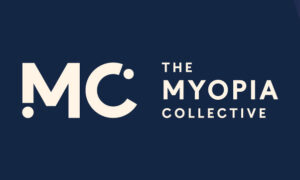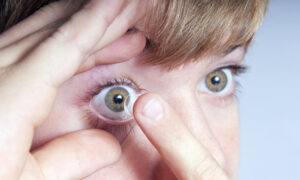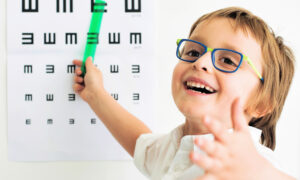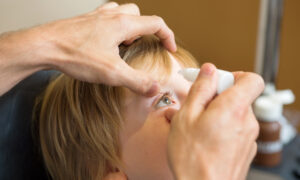June 3, 2024
By Dwight Akerman, OD, MBA, FAAO, FBCLA, FIACLE
Optical interventions, such as orthokeratology, multifocal soft contact lenses, and peripheral-plus spectacle lenses, have shown promise in slowing myopia progression in children. This systematic review aimed to assess the extent of the rebound effects following the cessation of these three common clinical optical myopia control interventions in children.
Chiu et al. conducted a comprehensive search of PubMed, Embase, Cochrane CENTRAL, and ClinicalTrials.gov from inception to October 2023. The rebound effects, defined as changes in the axial length or spherical equivalent during and after treatment cessation, were categorized into four levels. These studies encompassed 703 participants and spanned from 2019 to 2023, with durations of treatment and cessation ranging from six months to three and a half years and from two weeks to five years, respectively.
The systematic review revealed a predominant strong rebound effect in orthokeratology (eight studies), a weak rebound effect in multifocal soft contact lenses (four studies), and a variable rebound effect in peripheral-plus spectacle lenses (two studies). Notably, with the increasing cessation duration, the rebound effects diminished, potentially linked to the reversal of choroidal thickening and the disappearance of peripheral myopic defocus.
The review found that orthokeratology (OrthoK) had a strong rebound effect, with myopia progression significantly faster after treatment cessation compared to baseline. The authors suggest that the rebound effect may be linked to a rebound in choroidal thinning or a reversal of choroidal thickening, which had been observed during OrthoK treatment. Additionally, the authors speculate that the rebound effect may be attributed to the loss of the peripheral myopic defocus, which has been suggested to play a role in myopia control.
The review found that multifocal soft contact lenses (MFCLs) had a weak rebound effect, with myopia progression slightly faster after treatment cessation compared to baseline. The authors suggest that the rebound effect may be linked to a loss of peripheral myopic defocus, which had been provided by the MFCLs during treatment. However, the authors noted that the rebound effect was not statistically significant in several studies, indicating that the rebound effect of MFCLs may be less pronounced than that of OrthoK.
However, the review found that the rebound effect of peripheral-plus spectacle lenses (PPSLs) was variable, with some studies reporting a rebound effect and others reporting no rebound effect. The authors suggest that the rebound effect may be linked to the loss of the peripheral myopic defocus, which had been provided by the PPSLs during treatment. However, the authors noted that the sample size of the studies included in the review was small, and further research is needed to confirm the rebound effect of PPSLs.
In conclusion, this systematic review provides valuable insights into the rebound effects following the cessation of myopia optical interventions. The findings suggest that OrthoK has a strong rebound effect, while MFCLs have a weak rebound effect, and the rebound effect of PPSLs is variable. The authors suggest that clinicians should be aware of the potential rebound effects of these interventions and that further research is needed to determine the long-term effects of these interventions on myopia progression.
This systematic review is a reminder for clinicians and patients that treating juvenile-onset myopia is a long-term endeavor. In today’s myopigenic world, many children who develop myopia at 6-8 years old may require treatment for as long as 10-12 years before axial length and refractive error stop progressing. Premature discontinuation of myopia management interventions can lead to unnecessary rebound, which negates the purpose of the treatment.
Abstract
Systematic Review of Myopia Progression after Cessation of Optical Interventions for Myopia Control
Yu-Chieh Chiu, Ping-Chiao Tsai, Ssu-Hsien Lee, Jen-Hung Wang, Cheng-Jen Chiu
Despite high discontinuation rates for myopia optical interventions, limited attention has been given to the potential rebound effects post-discontinuation. This systematic review aims to assess the extent of the rebound effects following the cessation of common clinical optical myopia-control interventions in children. A comprehensive search of PubMed, Embase, Cochrane CENTRAL, and ClinicalTrials.gov was conducted from inception to October 2023. The rebound effects, defined as changes in the axial length or spherical equivalent during and after treatment cessation, were categorized into four levels. These studies encompassed 703 participants and spanned from 2019 to 2023, with durations of treatment and cessation ranging from 6 months to 3.5 years and from 2 weeks to 5 years, respectively. This review, encompassing 14 studies, revealed a predominant strong rebound effect in orthokeratology (8 studies), a weak rebound effect in multifocal soft contact lenses (4 studies), and a variable rebound effect in peripheral-plus spectacle lenses (2 studies). Notably, with the increasing cessation duration, the rebound effects diminished, potentially linked to the reversal of choroidal thickening and the disappearance of peripheral myopic defocus. In conclusion, a temporal trend of rebound effects exists in all three myopia optical interventions, possibly contributing to their myopia control mechanisms.
Chiu, Y. C., Tsai, P. C., Lee, S. H., Wang, J. H., & Chiu, C. J. (2023). Systematic Review of Myopia Progression after Cessation of Optical Interventions for Myopia Control. Journal of Clinical Medicine, 13(1), 53.
DOI: https://doi.org/10.3390/jcm13010053














